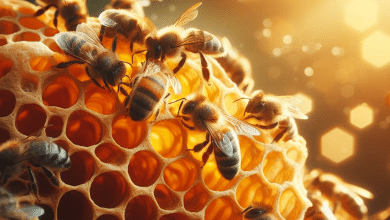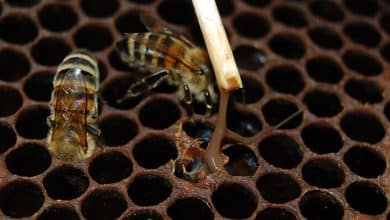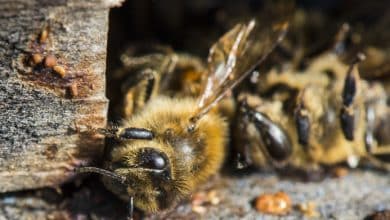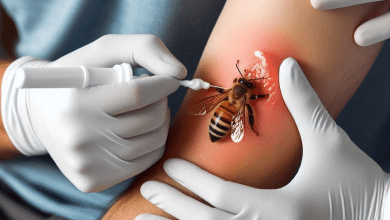Types of bee diseases and their prevention

-
Fungal Diseases (bee diseases)
 Both Stone Disease and Lime Disease are one of bee diseases that affect bees, affecting both young and adult bees. Applications like excessive syruping that will create humidity and enclosing the hives in an airless way, especially during the winter, should be avoided because humidity is the main element in the transmission and spread of these diseases. Long-term opening of the hives lowers the temperature in the brood regions and weakens the resistance of the cold brood, especially during colony controls in early spring. Additionally, as more oxygen reaches the larval tissues, fungal growth is stimulated. According to reports, the colony’s queen bee’s regeneration has a favorable impact on the fight against fungi.
Both Stone Disease and Lime Disease are one of bee diseases that affect bees, affecting both young and adult bees. Applications like excessive syruping that will create humidity and enclosing the hives in an airless way, especially during the winter, should be avoided because humidity is the main element in the transmission and spread of these diseases. Long-term opening of the hives lowers the temperature in the brood regions and weakens the resistance of the cold brood, especially during colony controls in early spring. Additionally, as more oxygen reaches the larval tissues, fungal growth is stimulated. According to reports, the colony’s queen bee’s regeneration has a favorable impact on the fight against fungi. -
Viral Diseases (bee diseases)

Bee diseases known as brood brood and bee paralysis in adult bees are diseases caused by commonly known viruses. Prevention and control are of little importance as no drugs are used in the control of viral diseases. It will be beneficial to replace the queen bees of sick colonies with young queens, and to work with strong colonies where hygiene rules are applied.
Bee Parasites and Pests

This category includes parasites and pests like varroa, bee lice, acariosis, small hive beetles, and giant wax moths. The parasite varroa is the most well-known because of its significant impact. Every member of the hive, regardless of age group, is impacted by varroa. While the parasite directly absorbs the hemolymph of the bee, it also leaves open wounds on the bees that allow other bee diseases-causing agents to spread. Similar to acariosis, which is an internal parasite that establishes itself in the trachea of bees and causes havoc due to its piercing-sucking mouth design, In this regard, the fight against acariosis and particularly varroa is crucial, and both parasites are neutralized using organic acids.
The small hive beetle enters the hive and lays its eggs on the honeycombs with pollen and offspring. When the eggs turn into larvae (2-6 days), they are fed with honey, pollen, bee eggs and larvae in the hive. Pesticide is applied to the soil where the hives are located, and the combs are kept at -12 °C for 12 hours. The damage caused by bee lice, especially observed in worker and queen bees, is in the form of feeding them with honey, pollen and royal jelly in the hive by clinging to the chest, head and mouth. However , the weak colonies in which the bee lice are concentrated , die out after a while due to starvation . Medicines containing bromopropylate and formic acid are effective in the control of bee lice. Similarly, the larvae of the large wax moth feed on honey and stored pollen, causing economic losses, especially in weak colonies. Keeping the combs for 3 hours at -12 °C or 2 hours at -15 °C kills the moth in all development stages, including eggs. The weak colonies, where the bee lice are concentrated, eventually perish from malnutrition. For the treatment of bee lice, medications containing formic acid and bromopropylate are helpful. Similar to this, the giant wax moth’s larvae consume stored pollen and honey, resulting in financial losses, particularly in colonies with poor populations. Keeping the combs at -12 °C or -15 °C for 3 hours or 2 hours will kill the moth in all stages of development, including eggs.
Other Bee Diseases
bee diseases including dysentery (diarrhea) and colony collapse disorder (CCD) might be explored under this area. Overwintering with supplemental feeding ingredients made from materials like dysentery, nosema, fermented or immature honeys, moldy pollen, molasses, Turkish delight, and hard candy, especially in autumn incentive feeding, which can only be recognized by laboratory inspection.


 Both Stone Disease and Lime Disease are one of bee diseases that affect bees, affecting both
Both Stone Disease and Lime Disease are one of bee diseases that affect bees, affecting both 




6 Comments